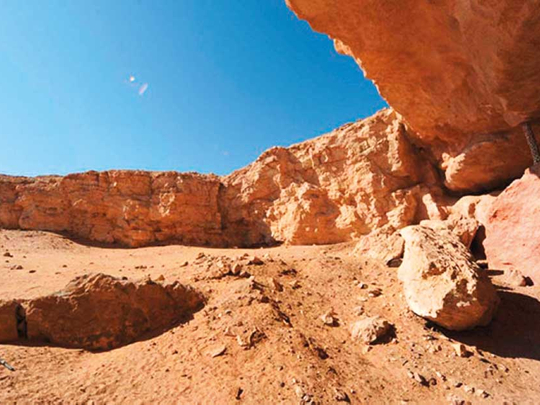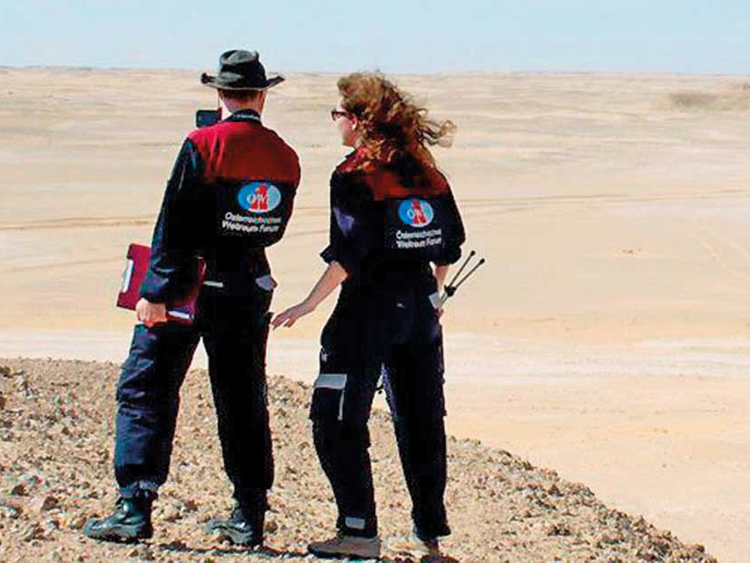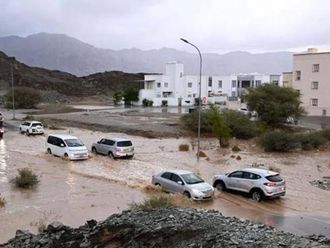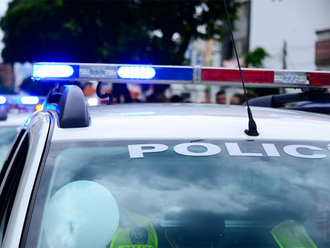
Muscat: Dhofar deserts bearing resemblances to Mars surface features have been officially chosen as the site for experiments for Mars Analogue Mission AMADEE-18 in February 2018, Gulf News can report in an exclusive interview with Dr Gernot Gromer, President of the Austrian Space Forum (OeWF) and head of the expedition.
AMADEE-18, led by the OeWF, will simulate life on Mars on Omani mountains and deserts to equip astronauts with knowledge of Martian terrain.
The OeWF delegation will return to Oman at the end of October for the formal signing ceremony of the Memorandum of Understanding for the mission.
OeWF will conduct its Mars simulation in association with Oman Astronomical Society, along with contributions from governmental and specialised entities represented in the AMADEE-18 National Steering Committee.
As per an official report by OeWF, Professor Shaikh Al Khattab Ghalib Al Hinai, Vice Chairman of the State Council of Oman, Chairman of National Steering Committee for AMADEE-18 said: “The Sultanate of Oman is proud to be selected as the host country for Austrian Space Forum’s Mars Analog Mission. This project will open up opportunities for space aficionados. It will enable them to connect with a global network of space scientists.”
Explaining the test site, Dr Gromer said: “Dhofar replicates various Mars surface features, such as sedimentary structures dating back to the Paleocene and Eocene, salt domes of the South Oman Salt Basin and ancient riverbeds. The nearest major town surrounding test site is Salalah, though further details of the location cannot be divulged due to security reasons.”
“The purpose of a Mars simulation on Earth is to prepare for future crewed missions on the Red Planet. To perform the experiments, the OeWF is one of the five research groups worldwide to develop the prototype spacesuit ‘Aouda’, worn by OeWF’s Analog-Astronauts, weighing 45kg to mimic the major limitations of a pressurised suit on Mars during its mission. In the Dhofar region, we have found the perfect site for AMADEE-18,” says Dr Gromer.
Dr Gromer also noted: “We have developed an exoskeleton emulating the pressurisation to account for the correct mass-to-force ratio owing to the lower gravity on the Red Planet. To account for the gravity difference, we decided to exclude suit components, which are not needed on Earth, such as pressure gas containers and use ambient air to acquire the correct physiological workload on the astronaut”.
As for Mars missions, the instruments for experiments will be deployed in combination with other experiments, such as ground penetrating radar and field portable spectrometers.
The data, pre-processed on site, transmitted via a satellite link to the Mission Support Center in Innsbruck, Austria, will be interpreted by researchers to channelise the results for the flight planning team to proceed with the geological sampling of analogue astronauts.
Remoteness and dryness are a few challenges expected on site. Benign conditions are the winds that might intervene with two drones. OeWF has installed a dedicated meteorology team in the Mission Support Center to counter the major challenges.
Dr Gromer reiterated that fine-grained particles of sand might pose serious challenges as found on Mars. Sand with its abrasive nature blocks electrical motors, sticks electrostatically to surfaces and harms filter and cooling systems.
“Challenges encountered and tackled in Oman would gear us for the final preparation on Mars on the final day,” said the field commander and head of the expedition.
Dr Narasimman Sundarajan, Associate professor of Applied and Exploration Geophysics at the Sultan Qaboos University’s Earth Science Department, Muscat, is instrumental in organising experiments for AMADEE-18. Experiments under his guidance are being performed by two high school students from the Sultanate with the support of geoscientists from PDO.
On Oman’s international reputation, Dr Gromer said: “With our scouting missions to the magnificent deserts of the Dhofar region, we hope other research teams might tread our path. This will aid the Sultanate to enhance its global repute by presenting the Middle East from a revamped angle”.
“At this point, the research and development is rather touted to be collaborative than competitive. The Oman mission will be a stepping stone to what could be considered one of the most challenging voyages we have undertaken in today’s times,” he said.
-Nickyta is a freelance journalist based in Muscat













